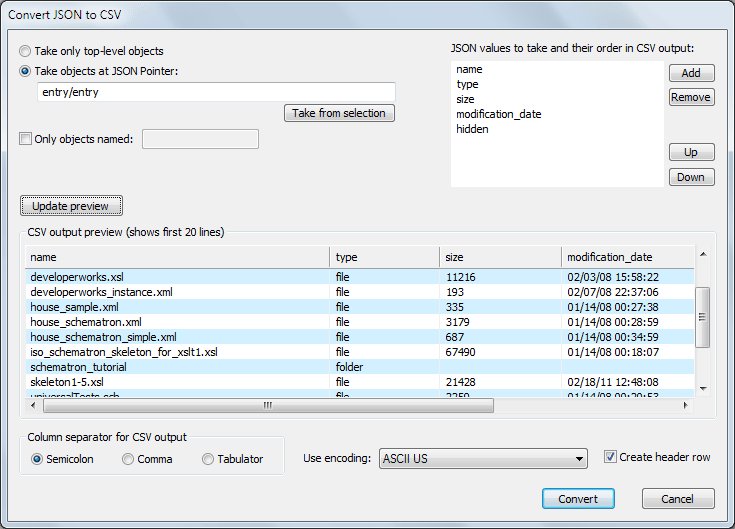

OR you can use your own custom templates. You can get started with Google-provided templates for a basic understanding of the workflow.

Please click on the file and copy its location as highlighted.Īll the files located in the bucket will be denoted as common folder naming as below example,Ĭonfiguring the Dataflow Job can be done using the GCP console or using the UI Dataflow interface.ĭataflow csv to json conversion python using templates

I have a sample file as shown below which we shall upload to the GCP environment.īelow I have created the “ Input” folder within the Bucket where the file is located. Let’s upload the sample CSV file to the google GCP bucket.

Enable all the Google APIs required for the projects.Make sure that billing is enabled for this project. We shall learn how to create a data flow job that will read a CSV file from a google storage bucket and then convert it to JSON format. Specifying setup.py for the Dataflow task.Setup Project Dependencies using requirements.txt or setup.py.Setting up security credentials – GOOGLE_APPLICATION_CREDENTIALS.If the JSON file has a different structure, you may need to adjust the code accordingly. In the example I provided, the JSON file is an array of objects, with each object having the same keys. It is essential to mention that the structure of the JSON file should match the structure that is expected by the code. The file can be generated from different sources, such as an API or data scraping, or it could be a file that you have created on your own. It could be any file that has a valid JSON format, such as a file containing information about products, customers, or weather data. The data.json file in the previous example is a file that contains data in JSON format. Please note that this code assumes that the JSON file is an array of objects, each having the same keys. The fieldnames for the writer are set to the keys of the first element of the data. Then, it creates a new CSV file and uses the CSV module’s DictWriter() class to write the data to the file. In this example, the code first opens the JSON file using the open() function and the JSON module’s load() function, which reads the file’s contents and converts it to a Python object. # Create a new CSV file and write the data with open( 'data.csv', 'w', newline = '') as csv_file: Import csv import json # Open the JSON file with open( 'data.json') as json_file:


 0 kommentar(er)
0 kommentar(er)
